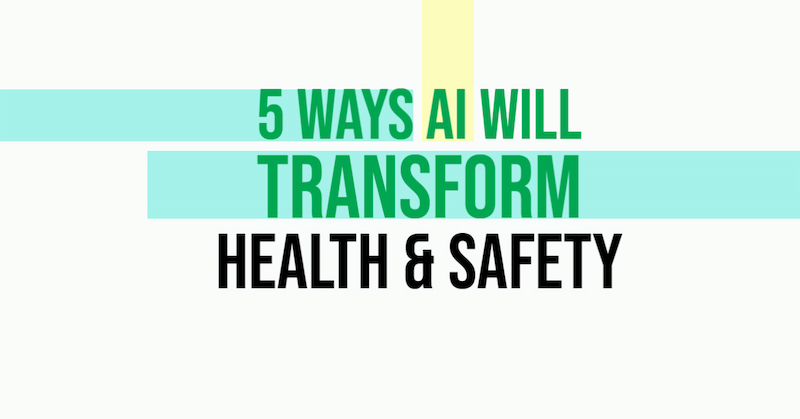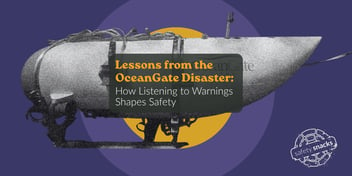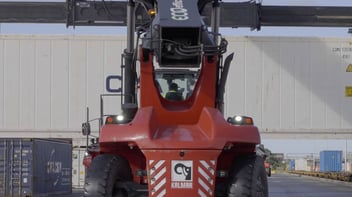It’s no secret now that AI is revolutionising the world as we speak. ChatGPT has come front and centre of the internet and technology as we know it, leaving a trail of awe, fear, and wonder in its wake.
If you’re not yet familiar - perhaps living under a rock - AI refers to a branch of computer science that mimics human-like intelligence (sans consciousness and emotions - we hope) capable of performing a wide variety of tasks and processing vast quantities of data in an extraordinarily short space of time.
This year we’ve seen a rapid increase in the uptake of AI technology available to the general public, with tangible AI that we use in day to day life.
Our initial contact with AI has been the likes of Apple’s Siri, or Amazon’s Alexa; but the start of 2023, the rise of platforms such as OpenAI & their ChatGPT AI heralds the beginning of a new era of humanity. This has the potential to transform our world in much the same way as the introduction of the internet did back in the 90s, or other significant advancements.
As with the emergence of any technology that will likely totally transform society, there’s a gripping fear that AI will replace human labour, and possibly lead a robot revolution (maybe).
Get fresh H&S insights weekly
Is there reason to worry? .
Like many things in life, you can either choose to worry, or choose to embrace the change. Of course, AI will change the world as we know it; this is an undisputed fact. However, we need to avoid buying into the moral panic surrounding it, and remember to look at this development from a lens of opportunity - because AI is a tool, that can help us uncover insights we didn’t have access to before, or free up our time from the more mundane tasks, to focus on other parts of work.
In health and safety, AI is helping systemise processes, and make sense of vast quantities of data, as well as work towards identifying hazards and issues within an environment. Beyond health and safety, AI can help streamline many different marketing and sales functions, helping the wider team get their work done.
Moral panic about technological advancements is not a new concept. It seems that no matter what the technology - whether it be moving from writing on chalkboards, to using paper, from radios, TVs, to phones - technology innovations comes with a healthy dose of collective hysteria surrounding it.
AI , albeit the most advanced technology yet, is no different. Will our processes change? Yes. But the fundamental “human-ness” that sits at the core of everything we do can’t be replaced by tech.
‘Deep Blue’, the computer, famously defeated chess grandmaster Garry Kasparov, back in 1997, sparking panic amongst people, heralding what many thought was the beginning of machines ruling humankind.
While machines facilitate much of our daily lives (we can order a fully-fledged restaurant meal at the touch of a button, from the comfort of our couch), they haven’t exactly ruled mankind in the way people were worried might happen.
Decades later, in the face of accelerated AI advancements, Kasparov himself has called for a different mindset towards AI that he believes we should all embrace, known as Kasparov’s Law.
He introduces the idea of a ‘supermind’ - that is, a human mind and AI technology working together to form a collective intelligence that surpasses either intelligence alone. Indeed, it’s now thought that human minds and AI are actually complementary in nature, and working alongside each other can achieve things we’ve never dreamed of.
Humans are, by nature, unpredictable and varied. Machines are not. Much of what makes society great is the serendipitous creativity that only humans can randomly create. We are not inherently logical; rather, we can find patterns with only one preceding example, and our emotions heavily skew how we perceive our reality.
Rather than replace people, AI can be applied to the workplace to help predict,prevent,and avoid accidents.
AI Does The Dirty Work
Some businesses have already begun using AI to perform all the dangerous, risky tasks that come with hands-on work tasks and result in high near-miss rates or incident rates - costing businesses hundreds of thousands of dollars annually.
For example, in some construction sites, builders and site managers are using AI-powered drones to collect data and valuable information about building sites, assisting with surveying the area and taking images from the sky to document any particularly dangerous parts of the building.
This kind of data is simultaneously stored and used for progress reports and updates, helping construction managers better plan an accurate schedule and factor in unforeseen events that might hinder progress.
Far from replacing human labour, AI frees up time for the workforce and keeps them safe; helping construction workers to avoid particularly risky jobs and tasks. Often, the greatest risk at sites comes from the human factor, where human error or fatigue lead to dangerous incidents. Using AI to do the harder, more dangerous tasks keeps people safer.
Much Like Usain Bolt, AI Speeds Things Up
When it comes to health and safety in the workplace, AI technology is starting to help us by finding patterns, trends, and key insights much faster than we would in person, from a wider variety of sources.
In the safety world, this is an excellent tool that truly frees up health and safety leaders’ time and focus. For any incident or near-miss event, AI technology can help instantaneously look at sets of data from across the business, identify trends that may be causing these incidents - for example, hiring new staff and not training them adequately coinciding with an influx of near-misses - and find a common, underlying causation factor.
By processing large volumes of data instantaneously, AI will find the patterns at the click of a button, speeding up your post-incident analytics process, giving you a more in-depth assessment about a given situation. Such information can then be used to trigger automated alerts, and help you take appropriate action towards mitigating the consequences of incidents.
There’s no question that this technology helps to increase the quality of the data health and safety leaders will use, by getting more data, from different sources (think VR headsets, drones, and wearable technology like watches) to help identify issues more clearly. AI also significantly speeds up the analytics process and gives leaders more time to build relationships with their team - rather than hole up for a week and assess the data themselves.
AI Assists With Mental Health
Another pillar of health and safety in the workplace is mental health and wellbeing. Keeping employees mentally healthy is a must, and ensuring that the workplace does not contribute negatively to their wellbeing is a critical aspect to workplace safety.
With depression and anxiety rates on the rise - especially with the effects of the pandemic beginning to make their mark - there’s no better time to understand how AI technology aids workplace mental health.
Living in a constant state of anxiety with a lack of social connection was a difficult landscape to navigate, and the flow-on effects of the pandemics include the cost of living crisis, coupled with a looming recession. It’s a lot to stomach, and not digesting particularly well for many people.
The uncertainty of the future, coupled with mandated social isolation creates an increasingly difficult landscape to navigate.
AI can help with this, acting as supplementary support for therapists. Currently, therapy and psychologists are in demand, and getting support isn't always cheap. AI can help pull down this barrier to therapy and help people get the support they need, in more cost-effective ways.
For example, AI's ability to obtain more data can help provide timely alerts to individuals, doctors, and therapists via smartphones. For example, if someone is at-risk of substance abuse, the AI can send alerts to the person so that they can help avoid it.
AI language analysis algorithms are another new development that will likely have a pivotal role in shaping the future of how we diagnose and treat mental health. Using machine learning to analyse how we use language to identify the warning signs of greater issues (i.e. particular phrases, search terms etc.), AI can pick up on red flags, far more quickly and efficiently than a therapist might be able to.
AI therapy chatbots that help answer questions and can provide useful advice to patients, are another way in which AI can support therapy, by providing 24/7 support for the days in between face-to-face appointments.
AI Makes Work More Human
Ironically, AI makes work more human. AI automates those mundane tasks so that we free up more time to focus on the human side of business - creative endeavours, personal connections, high-level decision-making, and more.
Some AI technologies are being used to transcribe phone calls for sales teams, helping record important information and reducing any potential human error. We’re not always good with remembering small details, and sometimes those can be vital for a next step - using AI to transcribe phone calls is the first step in recording data.
AI can be used as a personal assistant, scheduling calendars, meetings and interviews and helping people’s busy schedules line-up. By reducing the small daily stressors we can face with organising a busy day, AI can make room for us to focus on what’s really important.
AI Greatly Improves EHS Software Solutions
The use of AI technology in EHS management software is still in its early stages of adoption, but as other points above have explored, has vast potential for growth. According to research firm Verdantix’s “Global Corporate Survey 2022: EHS Budgets, Priorities, and Tech Preferences”, only 8% EHS vendors have said widely incorporated AI technology as part of their offering.
16% of firms, however, wish to increase the use of this technology, while a further 16% are hoping to roll out AI in their software through 2023. It’s a high growth industry and AI technology in EHS software will continue to shape and change the health and safety industry as we know it.
One of the ways in which EHS software vendors might incorporate AI technology include features such as embedded AI-powered voice-to-text, or image-to-text functionalities, that can drastically speed up the data capture process. During an event, those involved will be able to spend less time on their devices, ensuring they’ve included all the relevant information, and let AI do the details work.
Innovations such as these will help to move EHS tasks and systems towards a more streamlined, simplified process. Long gone are the days where health and safety was a swear word in the office, or at the site, and caused more headaches than relief. With AI innovations coming in quickly, EHS no longer needs to slow processes down.
The opportunities for AI are abundant, and the research points to AI adoption in EHS software growing rapidly in the very near future.
Final Words:
Far from taking over, AI is actually transforming the workplace as well as health and safety as we know it - for the better.
With brilliant new ways to help streamline data analysis processes, and make sense of great swaths of data, AI helps give health and safety leaders better insights across all areas of their organisation and keep people safer at work. AI also has numerous benefits for mental wellbeing around work, and ultimately gives us room to hone in on the more human side of work.
Rather than shy away from these new technological advancements, we need to lean into AI and continue to see where we can implement the new technology, using the valuable opportunities that AI presents.
Will AI replace humans? For some more mundane, or time-consuming tasks - yes. But we should listen to Kasparov and imagine how superminds - the combined power of the human mind and AI working together - can shape the next decades and help us build a brighter future.








